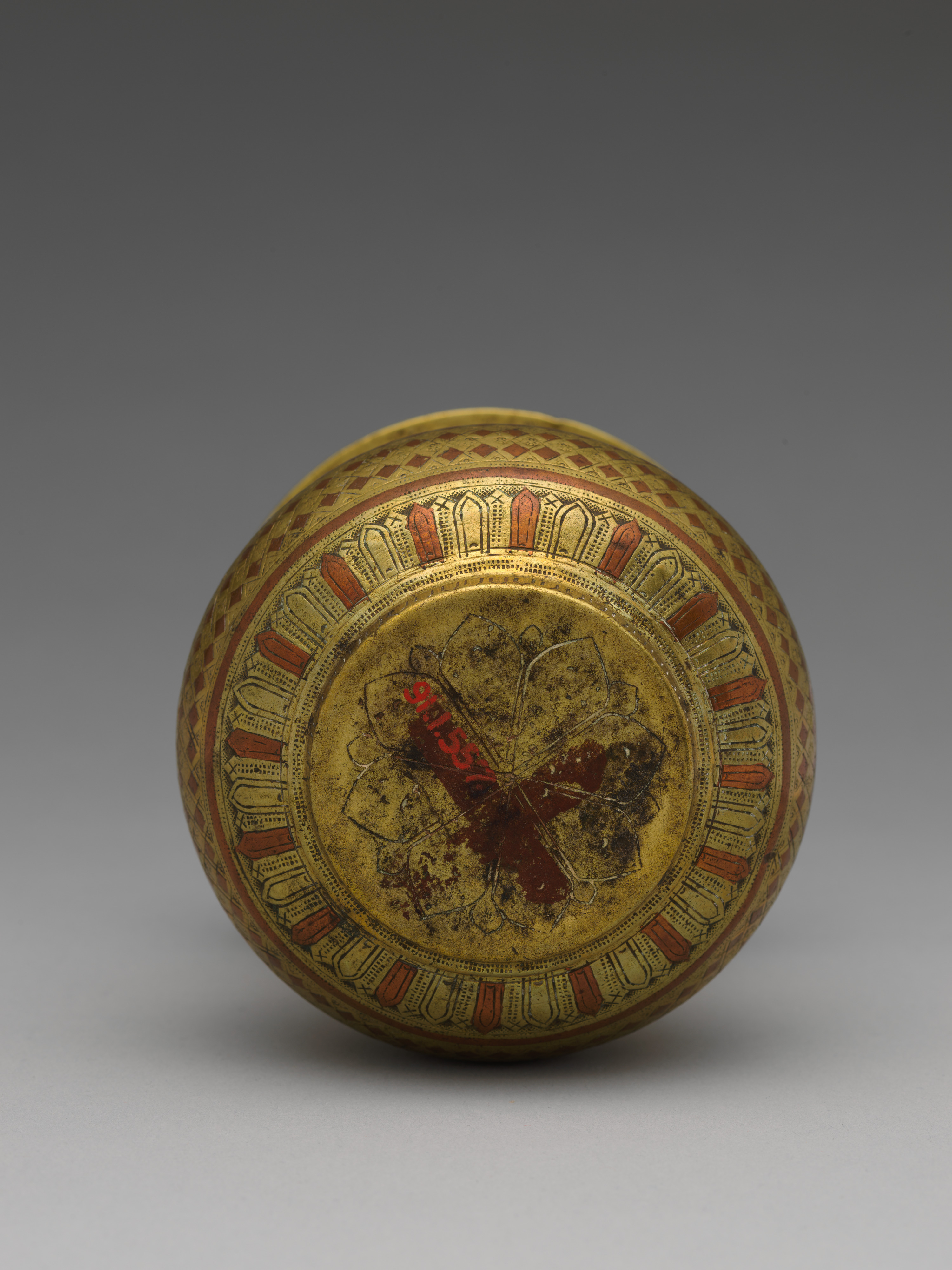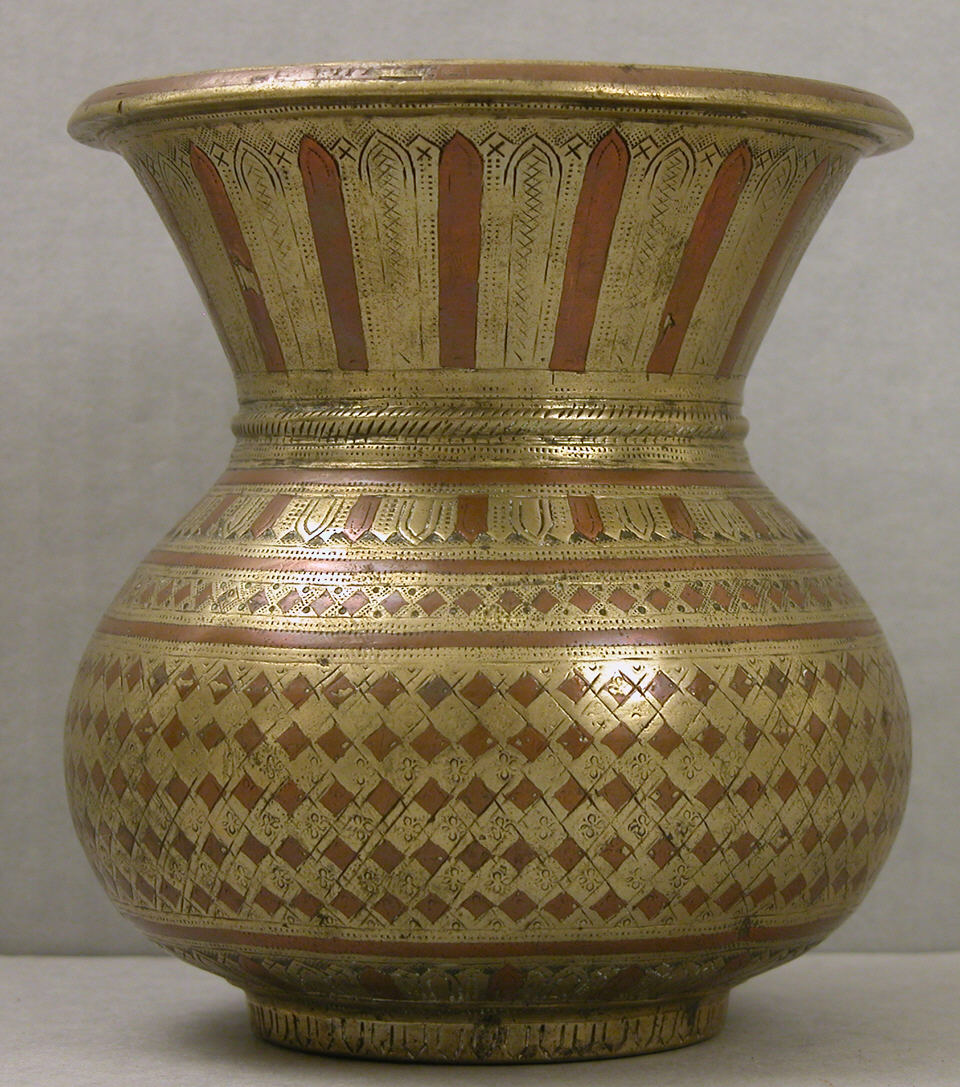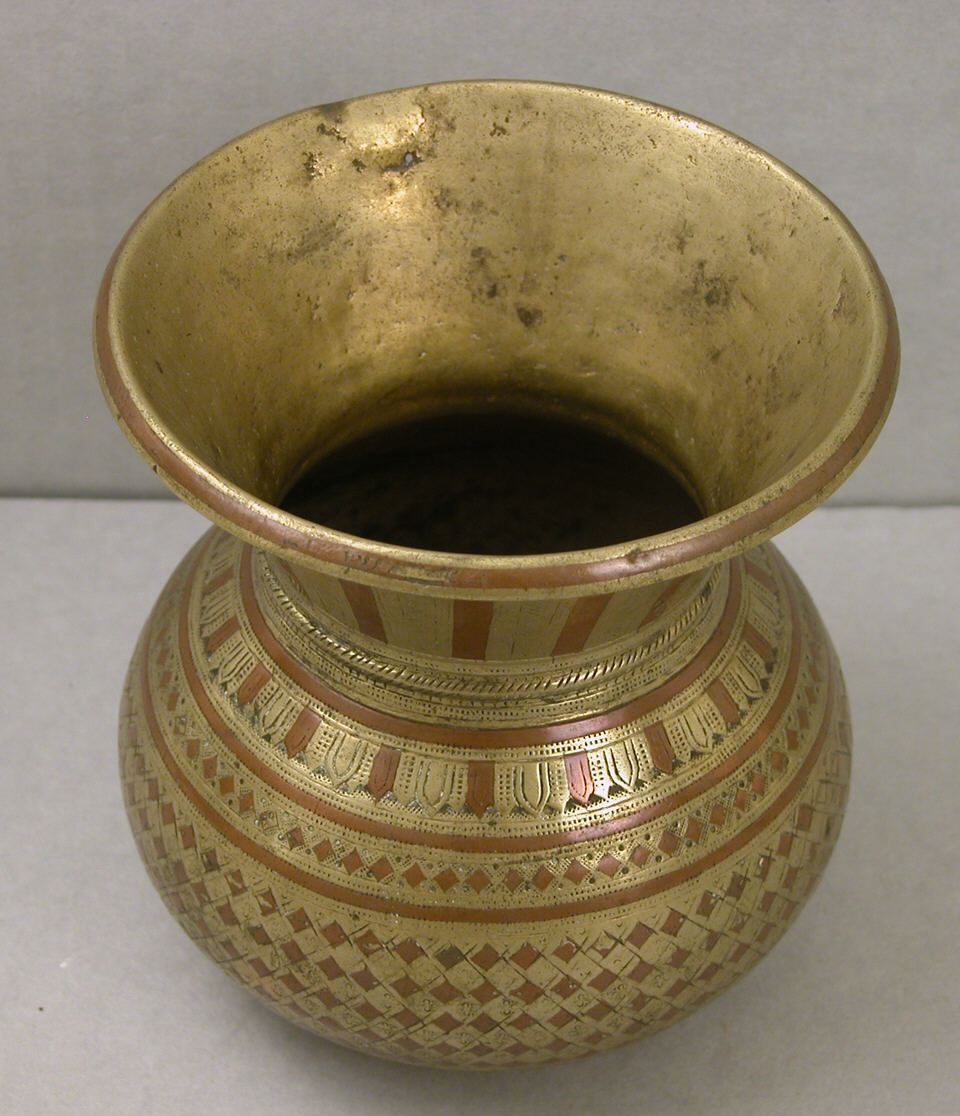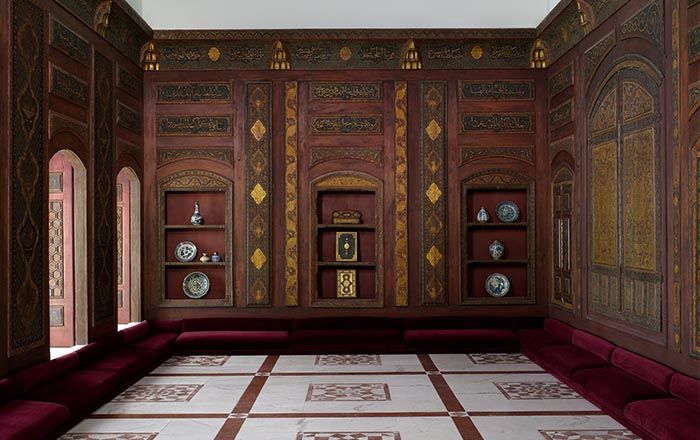Water Container (Ganga-Jumna Lota)
Not on view
This lota, or water container, is probably based on earlier models of seventeenth-century India that also survived after the beginning of British rule in the region. Its checkerboard pattern, perhaps derived from early Hindu decoration, reflects Islamic influence as well—specifically, the prominance of geometric patterns in the Islamic world. The square unit exists not only in the checkerboard design but also as a repeated sequence of diamond shapes in the band above the vessel's belly. The technique of employing brass and copper together on the same object, unique to India, is called ganga-jumna, after the contrasting colors of the Ganges and Jumna rivers. The Museum's lota most likely was made in Thanjavur, known for its superior brass production in the nineteenth century.
This image cannot be enlarged, viewed at full screen, or downloaded.
This artwork is meant to be viewed from right to left. Scroll left to view more.







